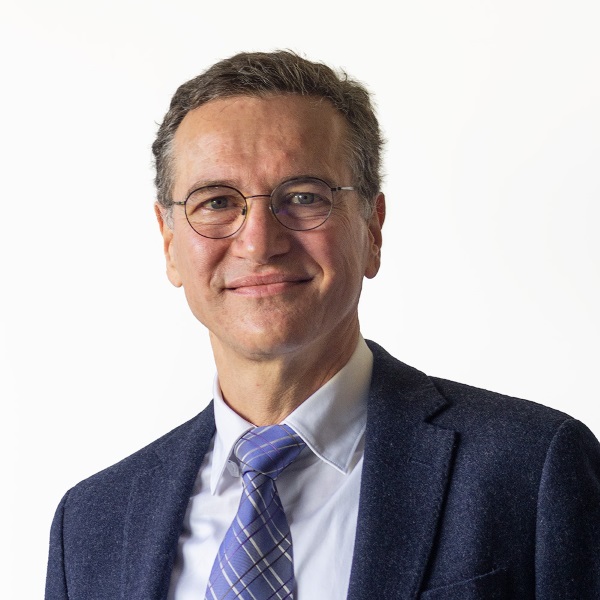An interview with Francesco Saverio Pavone, winner of the 2024 Fermi Prize
Francesco Saverio Pavone, director of the Biophysics Laboratory at the European Laboratory for Nonlinear Spectroscopy (LENS) and professor at the University of Florence, has been awarded the prestigious 2024 Enrico Fermi Prize, jointly with Alberto Diaspro from the University of Genoa. This award, granted by the Italian Physical Society (SIF), recognises Pavone’s pioneering work in biophotonics, a scientific field that explores the interaction between light and biological systems.
The award citation highlights Pavone’s “leading role in developing methods for manipulating single molecules and using spectroscopic imaging to study molecular processes in cells, tissues, and the brain.” This recognition underscores the significance of his research, which has not only expanded our understanding of cellular and brain function but also has practical applications in medical diagnostics. Among his most notable contributions, Pavone has developed innovative technologies that allow real-time observation of molecules, cells, and tissues, opening up new pathways for the study of neurodegenerative and cardiac diseases.
In this interview, Francesco Saverio Pavone shares insights into his career and the key themes that have shaped his scientific work.
Professor Pavone, the Fermi Prize is a highly prestigious recognition. What does this award mean to you?
It is a great honour to receive such a prestigious award. For me, it represents an important recognition of the research work carried out together with my collaborators. Biophotonics is an interdisciplinary field that brings together physics, biology, and engineering, and this award demonstrates how relevant these efforts are within the scientific community. I am pleased that our work can have an impact not only in terms of fundamental knowledge but also in practical applications in medicine.
The award specifically acknowledges your work in developing advanced techniques to study molecules and cells. How did your career in this field begin?
My career began in atomic physics and quantum mechanics, but around 2000, I decided to shift my focus towards biophysics and biophotonics. What has always fascinated me is the incredible complexity of biological systems, which operate on very different spatial and temporal scales. Studying how molecules interact to regulate cell function and form tissues, and how those tissues collaborate within a living organism, has been an exciting challenge. This required integrating many different skills, not just in physics but also in biology and engineering.
How would you describe the importance of interdisciplinarity in your work?
It’s essential. My work relies on collaboration between physicists, biologists, engineers, and more recently, psychologists and computer scientists. To study complex systems like the human body, it’s crucial to bring together a range of expertise. For example, my group has applied techniques from quantum optics to study single molecules, like DNA, and understand how they regulate fundamental processes like gene expression. In my view, this interdisciplinary approach is the future of scientific research.
One project you speak about with great enthusiasm is neuroaesthetics. What is this field about?
Neuroaesthetics studies how the brain responds to aesthetic experiences, such as art or music. At the Galileo Museum in Florence, where I serve as president, we are launching Italy’s first neuroaesthetics laboratory. Using neuroscientific techniques, we will collect data from museum visitors to understand how the brain reacts to art. This project is not only fascinating from a research perspective, but it also has a strong public outreach component, helping visitors to better appreciate the connections between beauty and science.
What has been one of the most significant moments in your career?
One of the most exciting moments was when, along with my collaborators, we managed to “film” a single molecule in motion. We used optical tweezers to observe in real time how a molecular motor moves along an actin filament. This type of experiment helped us understand how diseases like muscular dystrophy originate at the molecular level. It was a moment that opened new perspectives for studying neurodegenerative diseases and other conditions.
What motivates you to continue your scientific research, and what are your goals for the future?
My main motivation is to ensure that my research has a positive impact on society. In recent years, I have focused on the concept of “global well-being,” which unites physical, social, and cultural health. I believe science should help people live better lives, and that means not only developing advanced medical technologies but also improving the quality of life and social interactions. I would love to see my research contribute to policies that promote a more holistic and comprehensive approach to well-being.
Professor, your career has been marked by significant achievements and innovations. How do you see the future of science and research?
I believe the future of science lies in ever-deeper integration between different disciplines. Interdisciplinarity is key to tackling the most complex challenges, such as neurodegenerative diseases or managing environmental resources. Additionally, it will become increasingly important to engage society in the scientific process, not only through outreach but also through co-creating solutions. My dream is to see science work hand-in-hand with society to build a better future for everyone.




